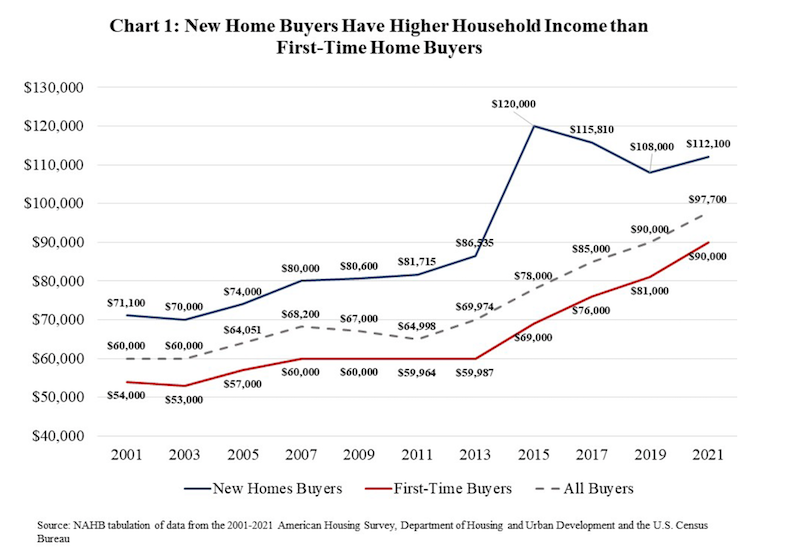Marketing & Sales
A Shift From The 'Demand Pool' To A Particular Buyer You Serve
On top of already-high and upwardly creeping house prices, the higher interest rates push, the more FOMO – for many first-time and entry-level home seekers – pivots to PO, for priced-out, or WIO, for waiting-it-out.

FOMO is so first-half 2023.
Because of upwardly creeping house prices, and high interest rates, the more FOMO – for many first-time and entry-level home seekers – pivots to PO (priced-out), or WIO (waiting-it-out).
For homebuilders, what this means is that the math of trying to price-in highly price- and interest-rate-sensitive homebuyers is getting progressively tougher and more expensive.
As that plays out, it's up to the sales and marketing team to elevate their game. The emerging challenge for new home-selling teams now shifts from focusing on the math of concessions towards the psychology of catalysts: i.e. getting discretionary purchasers to pull the trigger now rather than wait out the storm.
After a relative "everybody wins" late-winter and full Spring Selling season that mostly beat budget on home sales volume, pace, backlog deliveries, and even stronger pricing, nuance has started filtering winners from hangers-on, from strugglers. That goes for geographical market activity – which continues to be driven favorably by domestic in-migration and economic growth in a select couple of dozen destination metros leaving others in limbo – pricing, product, and location.
It applies as well intra-market and submarket, separating most homebuilders in each competitive market arena from a few outliers that continue to "kill it" at the expense of others.
The race now, full of urgency to tap future earnings growth among the larger, deep-pocketed national publics and equally intense resolve to counterpunch a sustainable competitive runway among smaller private operators, is for market share and a stabilized new-home order pace.
So, when the talk track in the field starts to sound like this ....
We're seeing demand continue to go up, but our conversion rates are going down."
What does that say about the challenges of the moment?
It means products that have to work at a higher-value proposition – distinctive and clearly differentiated – and a shopping and buying journey that's as close as possible to personally tailored end-to-end experience.
Understanding the power of Target Consumer Profiles
In today's rapidly evolving real estate landscape, the importance of a Target Consumer Profile (TCP), a foundation block of New Home Star's study cannot be overstated. Homebuilders and real estate developers face a unique set of challenges in a market where interest rates are climbing and home prices are elevated. To navigate these challenges effectively, marketing and sales teams need to be precise, evidence-based, and knowledgeable about their prospective customers.
What is a Target Consumer Profile?
A TCP is a comprehensive study that delves into the intricate details of your potential homebuyers. It goes beyond demographics and reaches into the realm of psychographics, providing insights into lifestyle choices, aspirations, and personal preferences. A well-crafted TCP essentially paints a vivid picture of your ideal homebuyer, enabling you to align your sales and marketing efforts more effectively.
Why Are Target Consumer Profiles Important?
The significance of TCPs lies in their ability to drive success in a highly competitive market. With the insights from a TCP, your team can make more informed decisions about product offerings, marketing strategies, and sales tactics. Here's why it's essential:
TCPs are always changing, and it's important to stay on top of these warp-speed trends," says Oren Jacobson, Lead Market Analyst at New Home Star. "The world of real estate is in a constant state of flux. To adapt, you must keep a keen eye on trends and changing consumer behaviors. A thorough TCP helps you stay ahead by providing real-time data on what's happening in the market."
Jacobson notes that a good place to start may be by studying highlights from the National Association of Realtors' Profile of Home Buyers and Sellers Report
In 2022, significant trends emerged from the Profile of Home Buyers and Sellers report, highlighting the evolving landscape of home buying. The report revealed that:
- The share of first-time home buyers is declining, and the first-time home buyer's age has hit an all-time high of 36 years.
- Unmarried couples constitute 18% of first-time home buyers.
- Repeat home buyers are older than ever, with a median age of 59.
- Most new homebuyers seek to avoid renovations or updates.
- The median distance between the purchased and previous homes has significantly increased to 50 miles.
- Homes are staying on the market longer.
- Fewer sellers offer incentives to attract buyers.
Further, a recent National Association of Home Builders analysis of American Housing Survey (AHS) – a study of 10.2 million home buyers – reveals even more telling clues about the characteristics of today's would-be and actual homebuyers.

- 7% of home buyers purchased a new home.
- 40% were purchasing their first homes.
- The median age of first-time buyers was 33 with a median income of $90,000.
- The median age of new home buyers was 45 with a median income of $112,100.
- The median market value of new homes was $429,205, and of homes purchased by a first-time buyer was $271,445.
Clearly, homebuilders need to lean into increased commitment and investment in their marketing, and it has to work more effectively than their efforts to date," says Chris Laskowski, Director of Marketing at New Home Star, a supporting partner of The Builder's Daily. Operators have been pushing sales, working with buyers to find the lending program that can work and a product with some incentives that will get them over the line, but among the cornerstones essential to a marketing plan's ability to drive conversions is that Target Consumer Profile."
Mastering Your TCP
To master your TCP effectively, you should focus on several critical factors:
- Understand your buyers' financial situation, age, family size, and priorities.
- Key considerations include affordability, school districts, floor plans, and the sense of community.
- Use these insights to craft a brand message that resonates with what matters most to your target audience.
Connecting The Marketing Dots
Getting your message across to prospects is essential. Studies show that a prospect needs to hear an advertiser's message at least seven times before taking action. To achieve this, consider a multi-pronged approach:
- Physical marketing through flyers, brochures, signage, and mailers.
- Digital marketing via e-blasts, social media, and your website.
- Outbound marketing through email, text, and phone calls.
- Consistency is the key to success.
For those seeking ways to master their TCP, solutions like New Home Star's New Home Connect™ offer a wealth of valuable insights. This platform aggregates customer intelligence from TCP surveys, providing easy access to custom reports and real-time information about your customers.
It's a tool that empowers you to make data-driven decisions in a dynamic market," says New Home Star's Laskowski. "It even provides insights outside of your division or builder, all while safeguarding each partner's unique information.
In an industry where precision and insight are ever-more critical, a robust Target Consumer Profile study serves as an essential foundation for building your team's success through the last quarter of 2023 and into early 2024.

MORE IN Marketing & Sales
Wray Of Light: Here's How To Keep Pace As Headwinds Stiffen
More than four out of five consumers think it’s a bad time to buy a home; here are seven strategies builders and developers can deploy as a more effective marketing plan to win sales.
These 5 Time-Tested Tips Will Jump Start 55+ Resident Referrals
When managing 55+ community homeowners associations, builders and developers need to meet and overdeliver on the high expectations of a particularly discretionary consumer group.
How A Homebuilder Stands Out In Florida's Fierce Competitive Arena
"Investing in your brand doesn't give you a direct return on investment immediately. It takes a long time, but over time, branding successfully does increase financial value." -- Alex Akel, President, Akel Homes


